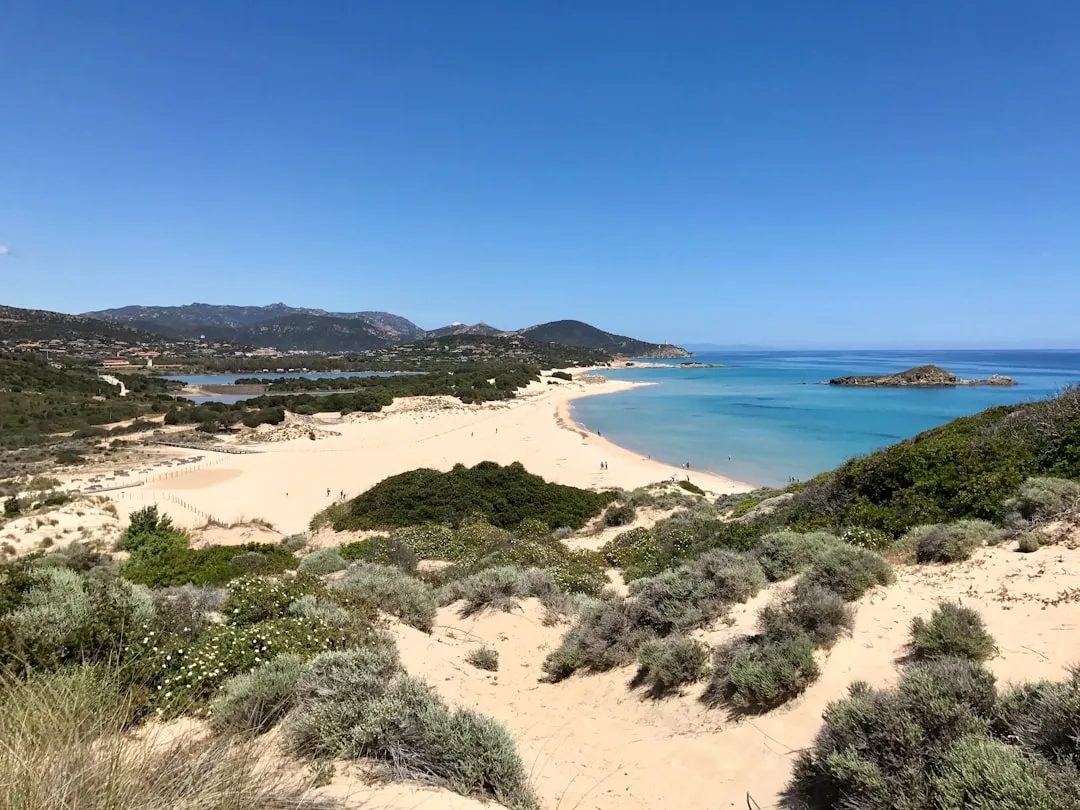As an Italian, I understand the allure of living and working remotely in Italy—whether it's for the rich history, delicious food, or the beautiful landscapes. The Italian Digital Nomad Visa offers non-EU citizens the chance to live and work in Italy legally while working remotely for a foreign employer or running an online business. This guide will take you through the details of the visa, its benefits, the application process, and the financial implications.
1. Overview of the Italian Digital Nomad Visa
The Italian Digital Nomad Visa (Visa per Lavoratori Autonomi Digitali) is a residence permit allowing non-EU citizens to live in Italy while working remotely for a company outside Italy or running their own online business. The program aims to attract international talent and digital workers to boost Italy's economy while offering a high quality of life to remote workers.
2. Why Choose the Italian Digital Nomad Visa?
Choosing the Italian Digital Nomad Visa has many advantages:
- Flexibility to Work Remotely: Work for any foreign employer, a client, or run your own business, all while living in Italy.
- Exploring Italy's Rich Culture: Italy offers world-renowned art, history, and cuisine to inspire your work and relaxation.
- Tax Incentives: You can take advantage of Italy's tax incentives, such as the Flat Tax Regime for High-Income Individuals, the Regime Forfettario, or the €200,000 Lump-Sum Tax Regime.
- EU Mobility: Once in Italy, you can travel freely within the Schengen Zone, opening up countless opportunities for work and leisure.
- Quality of Life: Italy offers excellent healthcare, beautiful landscapes, and a lifestyle that balances work with leisure.
3. Requirements for the Italian Digital Nomad Visa
To qualify for the Italian Digital Nomad Visa, applicants must meet the following criteria:
General Eligibility:
- Valid Passport: Your passport must be valid for at least three months after your planned stay in Italy.
- Proof of Remote Employment: Show that you are employed remotely or self-employed for a foreign company. This can include:
- A remote work contract with a company outside Italy.
- Freelance contracts or agreements with foreign clients.
- Evidence of an online business or self-employment with foreign clients.
- Financial Stability: You must demonstrate sufficient income to support yourself while in Italy. Typically, you will need to show proof of earning at least €2,000 to €2,500 per month (this may vary depending on the consulate).
- Health Insurance: Provide evidence of health coverage for the entire duration of your stay, either through private insurance or by enrolling in Italy’s national healthcare system (SSN).
- Clean Criminal Record: You will need to provide a clean criminal record certificate from your home country or any country where you have lived in the last five years.
Additional Documents:
- Accommodation in Italy: Proof of where you will stay in Italy (rental contract, hotel booking, or invitation from an Italian resident).
- Tax Records: Tax documentation from your home country or other countries of residence to demonstrate your employment or self-employment status.
4. Types of Digital Nomad Visa
There are different pathways depending on the nature of your remote work:
- Freelancers and Contractors: For individuals who work independently for foreign clients (e.g., as consultants, designers, or developers).
- Remote Employees: For those employed by a company based outside Italy and working remotely.
- Entrepreneurs: For those who run an online business or invest in a foreign-owned startup but work remotely for clients or companies abroad.
5. Application Process for the Italian Digital Nomad Visa
The process for applying for the Italian Digital Nomad Visa involves several steps:
Step 1: Gather Required Documents
Make sure you collect all of the following:
- Completed Visa Application Form: Available from the Italian consulate or embassy.
- Valid Passport: Should be valid for at least three months beyond your planned stay.
- Proof of Remote Employment: Provide contracts, invoices, or documentation showing that you work for a foreign employer or run a business.
- Proof of Sufficient Income: Provide financial documents such as bank statements, payslips, or contracts showing you meet the income requirement.
- Health Insurance: Provide proof of coverage for your time in Italy.
- Accommodation in Italy: Show a rental contract, hotel reservation, or invitation letter from an Italian host.
- Criminal Record: A certificate from your home country or countries of residence in the past five years.
Step 2: Submit Application at the Italian Consulate
Submit your completed application to the nearest Italian consulate or embassy. Be sure to schedule an appointment or attend an interview if required. The consulate will review your documents and may ask for additional information.
Step 3: Wait for Visa Processing
Visa processing times can vary but usually take 2 to 3 months. Be sure to apply well in advance of your planned move. The consulate may request further documentation during this time.
Step 4: Receive Visa Approval
Once your visa is approved, you will be issued a short-term visa that allows you to enter Italy. This visa is typically valid for one year.
Step 5: Apply for Permesso di Soggiorno
Once in Italy, you must apply for the Permesso di Soggiorno (residence permit) within 8 days at the local post office or immigration office.
6. Tips to Apply for the Italian Digital Nomad Visa
- Double-Check Consulate Requirements: Visa application requirements can differ between consulates, so always check the website of the consulate where you plan to apply.
- Be Clear and Transparent: Ensure all financial documents and contracts are clear, accurate, and up to date.
- Apply Early: Allow plenty of time for your application to be processed—start at least 2-3 months ahead of your planned move.
- Respond Quickly: If the consulate asks for additional documents or clarification, provide them as soon as possible to avoid delays.
7. Financial Implications (Cost & Tax Benefits)
Visa Costs:
- Visa Application Fee: The application fee for the Digital Nomad Visa ranges from €100-€200, depending on the consulate.
- Permesso di Soggiorno: The cost for the residence permit (Permesso di Soggiorno) is between €80-€200.
Tax Benefits and Implications:
Italy offers various tax regimes that may benefit digital nomads:
- Flat Tax Regime for High-Income Individuals:
- If your annual income exceeds €200,000, you can opt for Italy’s €200,000 Lump-Sum Tax Regime, where you pay a fixed tax of €200,000 on worldwide income, regardless of the amount earned. This is a tax incentive aimed at attracting high-net-worth individuals to Italy.
- Regime Forfettario:
- For freelancers, self-employed individuals, and small business owners, Italy offers the Regime Forfettario. This is a simplified tax regime with lower tax rates and fewer administrative requirements. The tax rate under this regime can be as low as 5% for new businesses or 15% for those who have been operating for more than three years. It is available for individuals with earnings under €65,000 annually.
- Income Tax:
- If you're working remotely for an Italian company or receiving income from Italian sources, you will pay taxes on that income at Italy’s standard rates, which range from 23% to 43% depending on the income bracket.
8. Pros and Cons of Living in Italy with the Digital Nomad Visa
Pros:
- Tax Benefits: The potential for low taxes via the €200,000 Lump-Sum Tax Regime or Regime Forfettario.
- Incredible Lifestyle: Enjoy a rich culture, art, history, and some of the world's best food and wine.
- Travel Opportunities: Live in Italy and explore Europe easily due to the Schengen Zone.
- Great Healthcare: Access to Italy’s high-quality healthcare system, SSN, once you’re a resident.
- Quality of Life: An excellent work-life balance with great weather, beautiful landscapes, and rich cultural experiences.
Cons:
- Bureaucracy: While Italy is welcoming, the visa process and bureaucracy can be time-consuming and complicated.
- Cost of Living: Major cities like Milan, Rome, and Florence can be expensive, especially for accommodation.
- Language Barrier: While English is widely spoken, especially in major cities, knowing Italian can significantly improve your quality of life and integration.
- No Work Rights for Italian Employers: You can’t work for an Italian employer without a separate work permit or visa.
9. Best Cities to Live in Italy for Digital Nomads
- Milan: A global business hub with a strong startup ecosystem, perfect for digital entrepreneurs.
- Rome: Ideal for those who want to combine a remote working lifestyle with cultural exploration.
- Florence: A hub for creatives, offering a combination of work and inspiration from its rich history and arts.
- Bologna: A student town with a growing remote work community and more affordable living compared to other major cities.
- Naples: A city that offers an emerging tech scene along with a rich cultural heritage, perfect for remote workers seeking a more laid-back lifestyle.
- Palermo: A quieter city in Sicily that’s gaining popularity with digital nomads due to its affordable living costs and vibrant culture.
Conclusion
The Italian Digital Nomad Visa provides an exciting opportunity for remote workers to live and work in one of the most beautiful and culturally rich countries in Europe. By following the steps outlined in this guide and taking advantage of Italy’s favorable tax regimes, you can live your dream of working remotely in Italy while enjoying the quality of life and tax incentives offered by the country.




